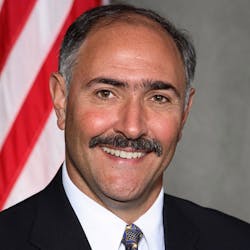Post COVID-19, do elevated decontamination protocols return to pre-pandemic levels?
Once the lingering pandemic – engulfed by COVID-19 and the delta variants – finally comes under control or leaves via medication and protocol enhancements, what happens to all of the heightened, intensified and “onerous as defined by COVID fatigue” cleaning, decontaminating, disinfecting and sterilizing procedures put in place?
Everyone ambles to return to “normal” as in like it was during pre-pandemic 2019 but should all or some of the preventive measures adopted and enacted to combat COVID-19’s spread also return to 2019?
Infection prevention and environmental services experts share their perspectives about the inherent dangers in regressing and not continuing the more acute room decontamination/infection prevention protocols.
Karen Hoffman, R.N., CIC, FSHEA, FAPIC, Epidemiologist and Infection Prevention Consultant for NUVO Surgical and Vidashield, clinical instructor in the Division of Infectious Diseases at the University of North Carolina’s School of Medicine in Chapel Hill and immediate past president of the Association for Professionals in Infection Control and Epidemiology (APIC).
David St. Clair, Executive Chairman, Halosil International Inc.
Deborah Chung, North America Marketing Manager – Healthcare,
Essity Professional Hygiene
Deva Rea, R.N., CIC, Clinical Science Liaison, PDI
Ernest Cunningham, President, Nevoa Inc.
“There are many inherent dangers that could stem from not continuing newly enhanced room decontamination/infection prevention protocols over and above pre-pandemic procedures. The pandemic has provided us with an awareness that most facility protocols were lax in their terms of disinfection and that many employed cleaning methods were either outdated or insufficient. If we were to go back to the ‘norm’ of disinfection and decontamination, the spread of viruses will continue to happen and will develop and grow stronger, placing everyone at risk.”
Halden Shane, DPM, Chairman & CEO, TOMI Environmental Solutions Inc.
Richard Hayes, President, UVDI
Mark Stibich, Ph.D., FIDSA, Co-Founder & Chief Scientific Officer,
Xenex Healthcare Services
“Microbes are evolving faster than we are evolving at treating them, especially with 50-year-old chemical formulas. Novel solutions are delayed and discarded due to contracts, costs or lack of belief (regardless of studies). Insert Newton’s rule: Unless a new force can knock an item at rest or in motion, nothing really changes.
“The return on investment must be addressed. If a $100,000 machine can avoid two infections, a facility breaks even and a patient’s life improves. Combine technology with better supplies, training and education, and accountability for those trusted to clean, disinfect and protect, and we are on a good path. Eliminate incentives to investing in these, and we are in danger of more and more costly infections.
“We may see a pendulum effect, or we may see a new growth industry. I personally was amazed at how little traction we had during the pandemic – it was due to COVID stay-at-home policy and ransomware, which all caused 10 times the amount of emails, which caused more stress and work and so on. Lack of access to key decision maker in a position to make an informed decision stalled acute-care room decontamination [efforts]. With elective procedures stopping and then restarting with a vengeance, it led to a blind spot in room decontamination with a focus on revenues and backlog. With the ebbs and flows of the pandemic, we must continue to educate the industry, lest we continue to fight these new variants with one hand tied behind our back.”
Brian Donahue, Director, Sales & Corporate Accounts, Finsen Technologies Ltd.
Sam Trapani, CEO, Steriliz LLC
“All too often, healthcare facilities revert to their baseline efforts of infection prevention and control as soon as the threat ‘clears.’ This has been repeatedly observed with recent outbreaks such as SARS, Novel Bird Flu, Ebola, and the current SARS-CoV-2 pandemic. Infection control, as a practice, requires a consistent and pragmatic approach to make sustainable reductions in healthcare-associated infections (HAIs). Healthcare facilities should not quickly forget the impacts of the ongoing pandemic, but rather take this opportunity to hardwire these infection control best practices throughout their healthcare systems to benefit all patients. Pandemic preparedness is an ongoing process that requires collaboration across all healthcare professional disciplines.
J. Hudson Garrett Jr., Ph.D., MSN, MPH, MBA, FNP-BC, IP-BC, PLNC, CFER, AS-BC, VA-BC, BC-MSLcert, NREMT, MSL-BC, DICO-C, TR-C, CPPS, CPHQ, FACDONA, FAAPM, FNAP, Adjunct Assistant Professor of Medicine, Faculty, Center for Education and Training in Infection Prevention (CETIP), Division of Infectious Diseases, Department of Medicine, University of Louisville School of Medicine; President & CEO, Community Health Associates LLC, which serves as a consultant to Clorox Healthcare
About the Author
Rick Dana Barlow
Senior Editor
Rick Dana Barlow is Senior Editor for Healthcare Purchasing News, an Endeavor Business Media publication. He can be reached at [email protected].










